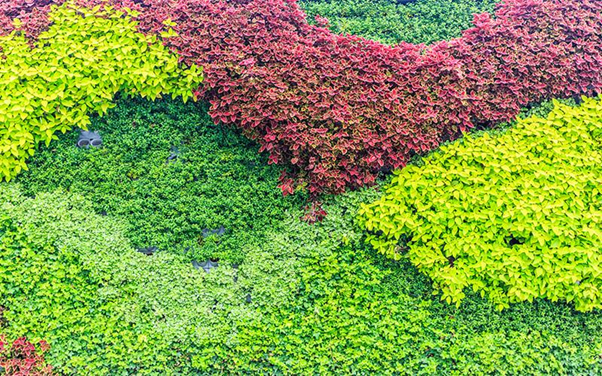In traditional garden design, flowers have long taken the spotlight. Their colours and seasonal appeal often shape the identity of outdoor spaces. However, there is growing recognition of the visual and structural importance of foliage. Garden foliage brings depth, contrast, and consistency—qualities that flowers alone cannot sustain throughout the year. By starting with foliage as the design foundation, gardeners can build more cohesive, enduring landscapes.
Texture Creates Visual Interest
The foliage helps put texture into place. From feathery ferns to waxy philodendrons, leaves offer a tactile diversity that adds richness to visual composition. When adding texture, it puts highlights and transitions for layering effects. It also allows for contrast when paired strategically, whether mixing large, bold leaves with fine, delicate ones or using matte and glossy finishes side by side. These contrasts offer a more dynamic and engaging garden experience without relying heavily on floral colour.
Colour Beyond the Flower Bed
Foliage isn’t limited to green. Garden foliage comes in different hues. This variety allows for more stable colour throughout the seasons, especially in climates where blooms are temporary. With colourful foliage, it ensures the garden creates a visual punch even when some flowers are dormant. Plants such as coleus, caladium, and ornamental grasses bring vibrancy and personality to spaces in ways that complement or even replace flower-centric designs.
Supporting Wildlife and Biodiversity
Garden foliage provides more than visual and structural value—it supports local ecosystems. Leafy plants offer shelter for insects, birds, and small mammals. When combined with flowering species that provide nectar or seeds, foliage plants contribute to balanced, biodiverse gardens. In sustainable design approaches, prioritising foliage enhances environmental function as much as aesthetic goals.
Year-Round Structure and Form
Unlike flowers, which bloom and fade within weeks or months, foliage provides lasting structure throughout the year. Shrubs, hedges, and architectural plants shape the garden and define its spatial organisation. Whether lining a pathway, framing an entryway, or dividing zones, foliage is a natural organiser. This structure supports the design concept during seasonal transitions, maintaining the garden’s shape and cohesion even when other elements change.
Low-Maintenance Appeal
Foliage is often low maintenance. Many foliage plants are hardy, drought-tolerant, and resistant to pests. They require less deadheading, fewer replacements, and more predictable growth patterns than high-maintenance flowers. For gardeners seeking long-term results with reduced upkeep, building a design around foliage offers practical benefits. Once established, these plants provide consistent form and colour with minimal intervention.
Enhancing Shade and Microclimates
Foliage plays an important role in creating microclimates within garden spaces. Dense plantings of leafy shrubs and broad-leaved plants can offer shade, regulate soil temperature, and reduce evaporation. These environmental benefits help other plant varieties thrive while making outdoor areas more comfortable for human use. In urban gardens or compact spaces, layered foliage can improve thermal comfort while increasing biodiversity.
Learn More: 4 Benefits of Flower Subscriptions from Wholesale Suppliers
Framing and Highlighting Key Features
Strategically placed foliage can guide visual focus toward other key features in the garden. Whether framing a sculpture, water feature, or seating area, plants with distinct forms or colours can highlight and direct attention. Foliage in this way adds intent and direction to garden composition, creating focal points and helping manage visual balance across the space.
Prioritising foliage in garden design transforms how we approach outdoor spaces. By focusing on texture, structure, and enduring colour, foliage plants create a strong foundation that outlasts the fleeting nature of blooms. They offer functionality, sustainability, and beauty, all while keeping the landscape vibrant throughout the year.
For more information about quality flower arrangements, contact JM Flower today.





